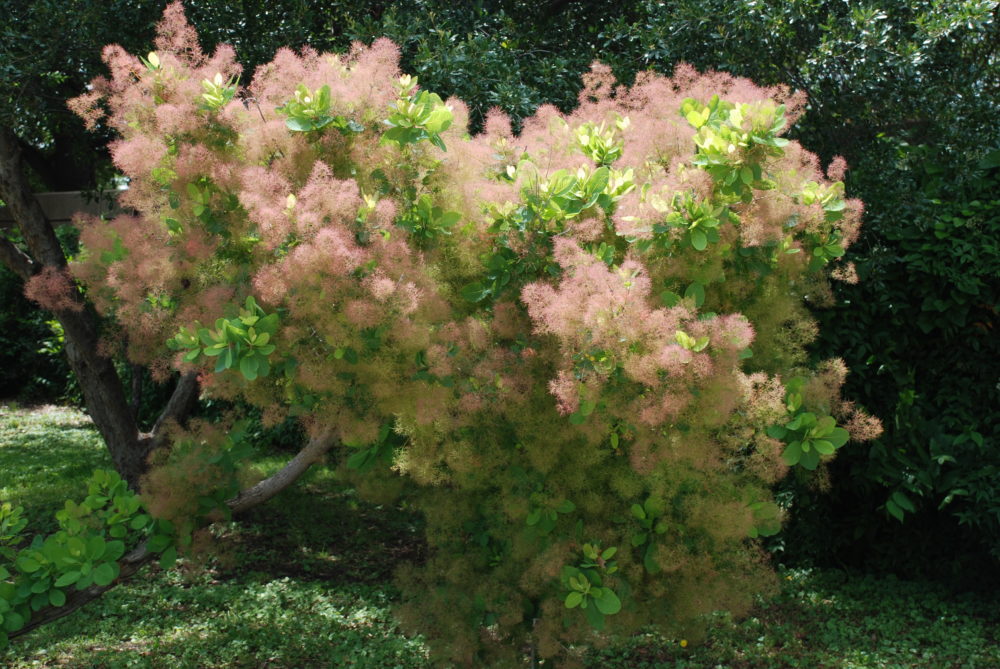Learn about the origin of the Central Texas tree and how to identify it
The American Smoke Tree, also known as Chittamwood, can be grown as a small ornamental tree or as a large shrub. It is not a well-known plant and can be hard to find in local nurseries. The tree is native to many states including Central Texas, Oklahoma, Arkansas, and Tennessee. (Dirr) It prefers alkaline, well-drained rocky soil, and is particularly well-adapted to limestone soils (avoid wet soils).
You can find the smoke tree locally in Dallas/Ft/ Worth in resident yards but not in the wild (such as the Hill Country). As an ornamental tree, the main attraction is the Fall color and the smokey plumes.
Also known as panicles, the smokey plumes have a red/purplish hue that resemble a cloud of smoke and really stand out against the blueish/green leaves of the plant. In the Fall, the blueish/green leaves turn red, orange, and yellow and provide beautiful Fall colors to any garden.

The American Smoke Tree was originally discovered in 1819 by one of Oklahoma’s first botanists, Thomas Nuttall, in northeastern Oklahoma. Originally from England, Mr. Nuttall was an expert botanist and zoologist who traveled North America in search of new plants in the early 1800’s and is considered as one of America’s greatest botanists.
Thomas Nuttal has many tree species named after him including Nuttall’s Oak (Quercus texana), the Pacific Dogwood (Cornus nuttalli), and Catclaw Briar (Mimosa nuttalli). If you are interested in learning more about Thomas Nuttall and his many plant discoveries, consider reading “The Land between the Rivers: Thomas Nuttall’s Ascent of the Arkansas”.
Fun Facts:
- The American Smoke Tree was coveted for its yellow/orange dye and was almost lost due to over-harvesting during the Civil War.
- There are two American Smoke Trees in front of Abraham Lincolns tomb in Springfield, Illinois (Dirr)
